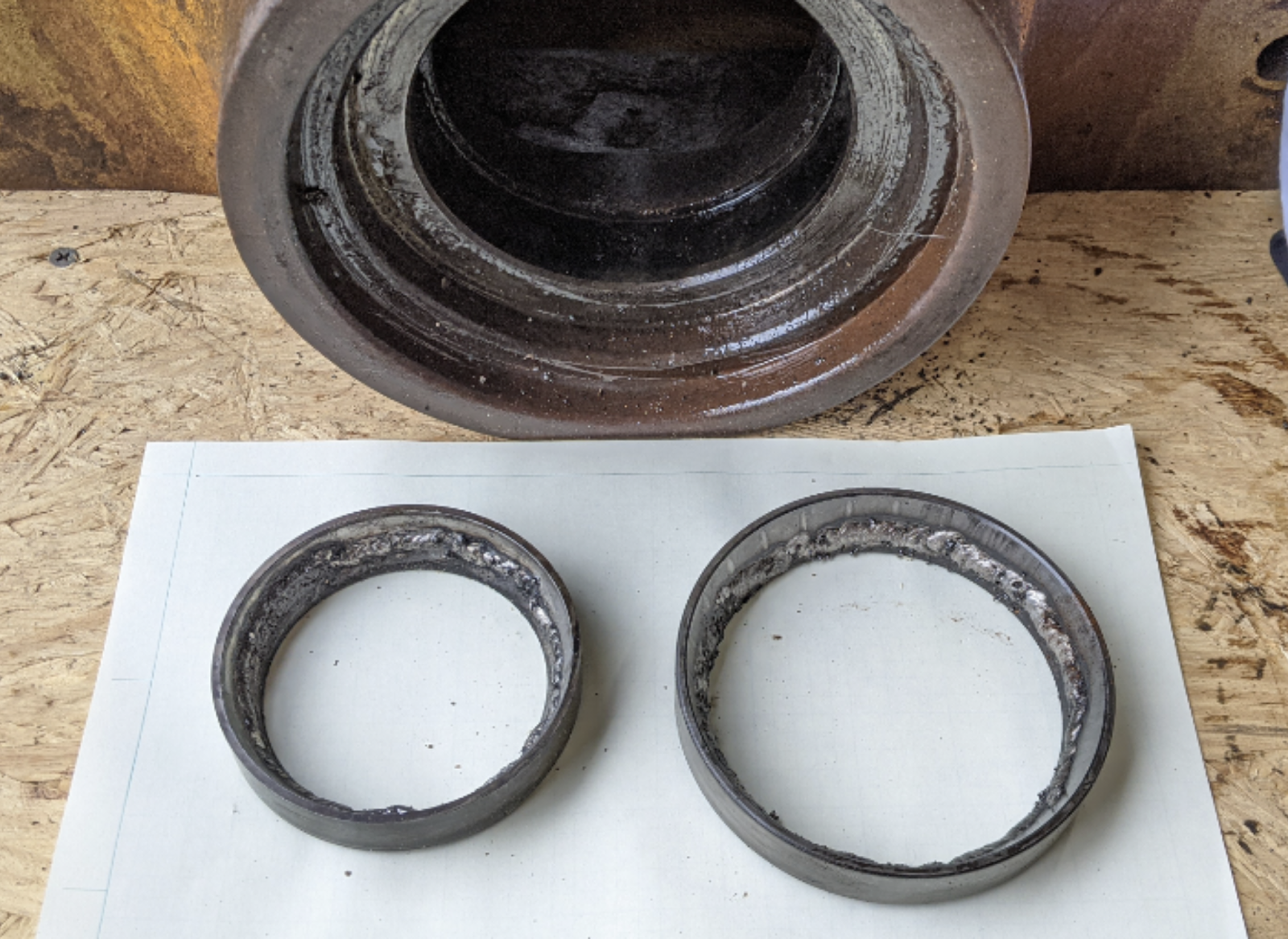The process was pretty simple once you get past using a welder on the finals.
The bearing races where all pitted and had small cracks in them.

I had some friends that have worked on heavy equipment before tell me that you can weld the races and when they cool they will shrink and fall out. I happen to have a very cheap mig welder and decided to give it a try. I cleaned all the oil off the finals and covered the metal areas in anti-splatter. I also stuffed wet rags into the housing to help keep any weld splatter from sticking to surfaces I didn't want it on.
So here I am running a bead of weld around the middle of one of the races. I did the same thing to all the races in each final.

Once the race cooled it practically fell out of the housing.

To put new races in I used dry ice to cool the races and shrink them enough to drop in. I put dry ice into the bottom of a small foam cooler. Then I placed the bearing races in the cooler and filled with enough anti-freeze to cover all the bearing races. I let everything sit overnight.
The next day I used a MAP gas (yellow can) to heat the final drive housing and checked the temp with a thermal gun (harbor freight). Once I got the final above 200F I pulled the bearing race from the cooler and dropped into the hole in the final drive. I gave a few gentle taps with a punch and hammer to make sure it was fully seated. I then kept pressure on it until all the frost disappeared from the race. One all the frost was gone it was locked in place.
The dry ice method worked very well. You just have to move quickly and make sure you start the race in as straight as you can. Keep a punch and hammer close by in case the race doesn't drop all the way in. I had maybe 30 seconds of time from when I stopped putting heat to the final to having the race set in place and the frost gone.
Hope this info helps someone in case they need to remove some bearing races, or put new ones in.
-Tom

